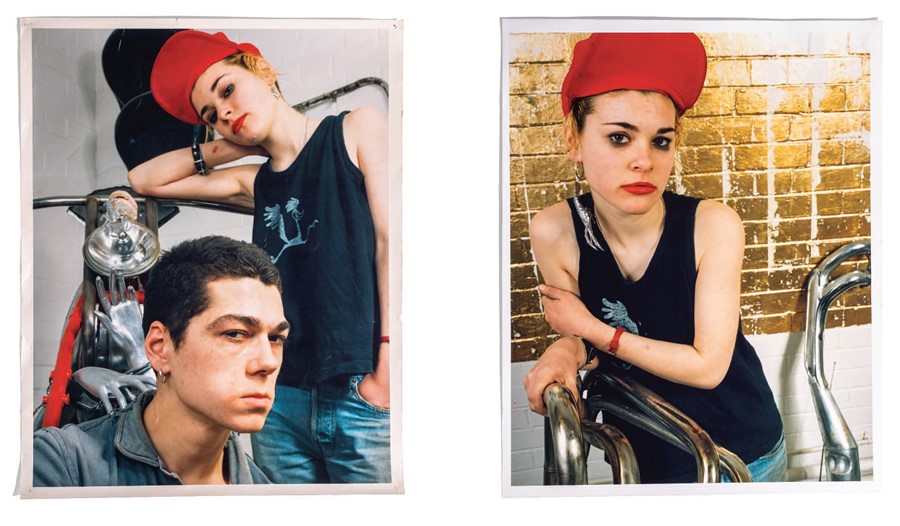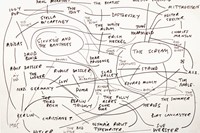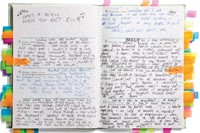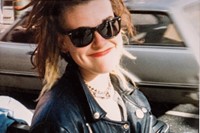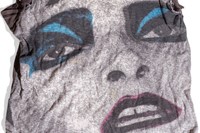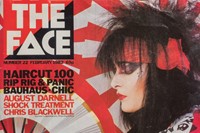“I got more and more obsessed by the music,” says Sue Webster, speaking as her new book, I Was a Teenage Banshee – which showcases the artist’s extensive collection of Siouxsie and the Banshees ephemera – is published
The truly obsessive fan is a miraculous thing. Someone who knows every fact and musical note a musician creates. Someone who travels following a band, and makes clothes and objects in their idol’s honour. Artist Sue Webster was one such fan, devoted as a teen to British punk-goth band Siouxsie and the Banshees, the group formed in 1976 by Siouxsie Sioux. It is this hugely formative experience – which emerged from a highly traumatic mental illness – that is the focus of Webster’s latest and brilliantly conceived book I Was A Teenage Banshee, published by Rizzoli.
Webster has had a very successful career as an artist as part of Tim Noble and Sue Webster with partner Tim Noble, their rebellious, rock and roll take on contemporary art making them some of the best known artists of the YBA generation. They have shown everywhere from the Royal Academy to Athens, Berlin, Boston, Moscow, New York, and Seoul. A few years ago the pair separated (though they continue to create art together), and it was only then that Webster felt able to address her issues. “I had a difficult childhood that I never mentioned to anybody – not even Tim, and I was with him for 25 years,” she notes. “There’s always been a thing that’s been this black mark on my shoulder chasing me, that made me push myself forward as if I was making up for lost time. It was something that I felt I needed to address at some point.”
Webster is sitting in front of a giant wall in her studio which is covered with pinned record covers, books, personal ephemera, tickets, cultural objects and images of her own work with Noble. Everything is linked together with pieces of pink string – like a mindmap or spidergraph in three dimensions. This explosion of thoughts is the basis of I Was a Teenage Banshee. The entire wall is based around four Siouxsie and the Banshees albums: The Scream, Join Hands, Kaleidoscope, and Juju. For Webster, these are at the heart of her formation as person and artist.
“I was ill when I was young. It’s something that I completely buried and so did the family. I was taken out of school and had to be hospitalised, I was basically institutionalised. They put me on lots of medications to try and iron it out. I felt I missed out on a massive chunk of my childhood or my teenage life. First in a children’s psychiatric unit in Leicester and then I got taken to another place in Cambridgeshire, which is even further away from my home,” she explains. It was at this point that she discovered the music of Siouxsie and the Banshees. “I kind of pinned my recovery on that. I felt that I adopted her as my imaginary mother, because I was kind of taken away from reality and lived in this other world. I got more and more obsessed by the music,” Webster continues. “I kind of used her to pull me through.”
When Webster was discharged from the unit, returned to school and passed her exams, nothing was ever discussed with her family. It was “as if nothing had ever happened; we just moved on, as it was, and that was that. It was like an embarrassment.” When her personal relationship with Noble ended, she realised she had to address the past. “I wasn’t having to be responsible for two people anymore. It was me and him against the rest of the world, and now it’s just me against the rest of the world. Now, I can really get deep inside myself.”
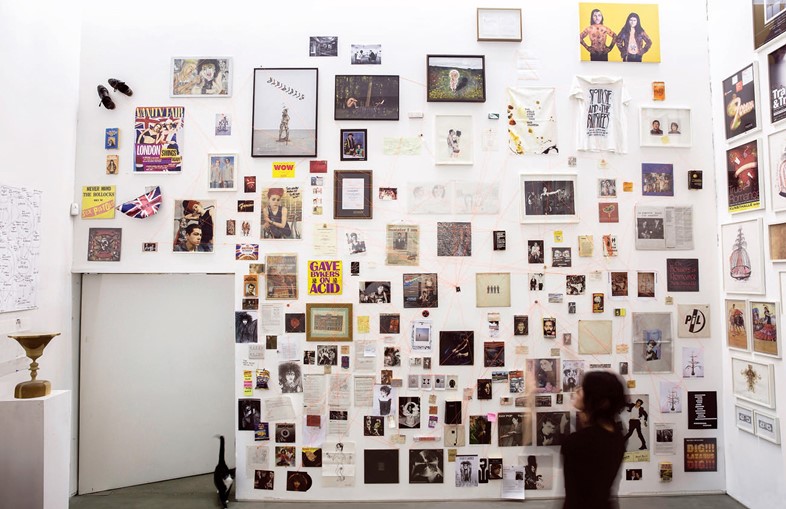
This book, akin to a phonebook-thick self-portrait, links the four Siouxsie Sioux albums with a lineage of cultural and personal history: Webster shows that everything is somehow connected to one of these four releases, from Edvard Munch, The Beatles’ Helter Skelter, artist Richard Hamilton, and Patti Smith to Laurie Lee, band T-shirts, childhood photographs. And at the centre, Webster’s incredibly personal diary of her experience in and out of psychiatric care.
Amazingly, Webster had kept all her ephemera in three cardboard boxes that travelled with her throughout her life. “Things got added to them, and things got thrown out. But all along, there was always my Siouxsie and the Banshees collection, my original T-shirts that I had from the 80s. I never throw anything away. I put them in little bags with all my badges. All of my concert tickets from my hundreds of times that I saw Siouxsie and the Banshees, backstage passes.” She met her idol through mutual friend Pam Hogg years later but barely spoke to her. “I still really don’t know her at all. I just think that that’s the only way that I could’ve made this project. It’s about me. It’s not about her.”
Making art out of the ruins of history or cultural experience has always been part of Webster’s practice. Tim Noble and Sue Webster have made shadow sculptures, where piles of rubbish or discarded dead animals would create a portrait of the duo when illuminated. Even her current home is a kind of reworking of the past: she is living in a David Adjaye conversion of a house in Hackney that was notoriously the home of the ‘Mole Man’, who burrowed a labyrinth of illegal tunnels below the street for 40 years. It was going to be demolished but Webster preferred to challenge its past. The house, the book, and her art are all an extension of this process of remaking. “It’s like taking something that nobody knew what to do with and then making something out of it – a bit like me,” she considers. “They didn’t know how to deal with me. I had a problem. I was flawed, and then we had to turn that around, didn’t we, and make some use out of it?”
I Was a Teenage Banshee by Sue Webster is out now, published by Rizzoli.
